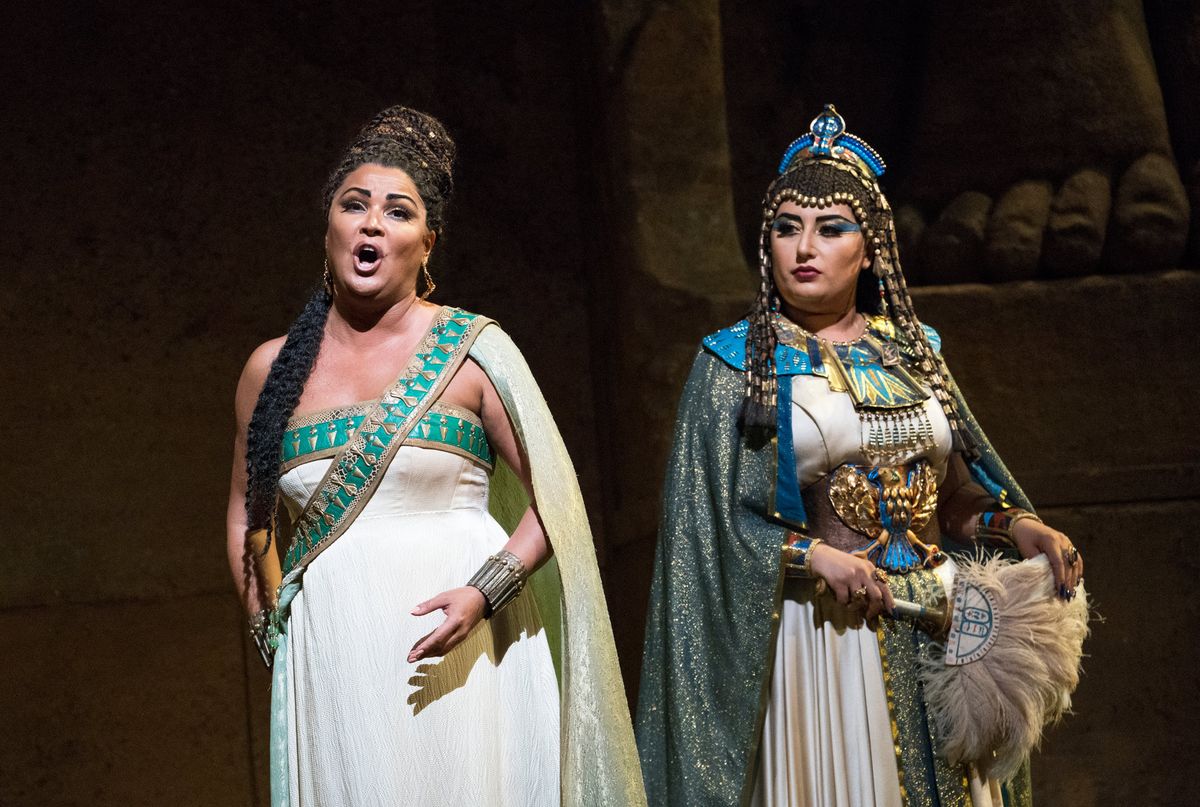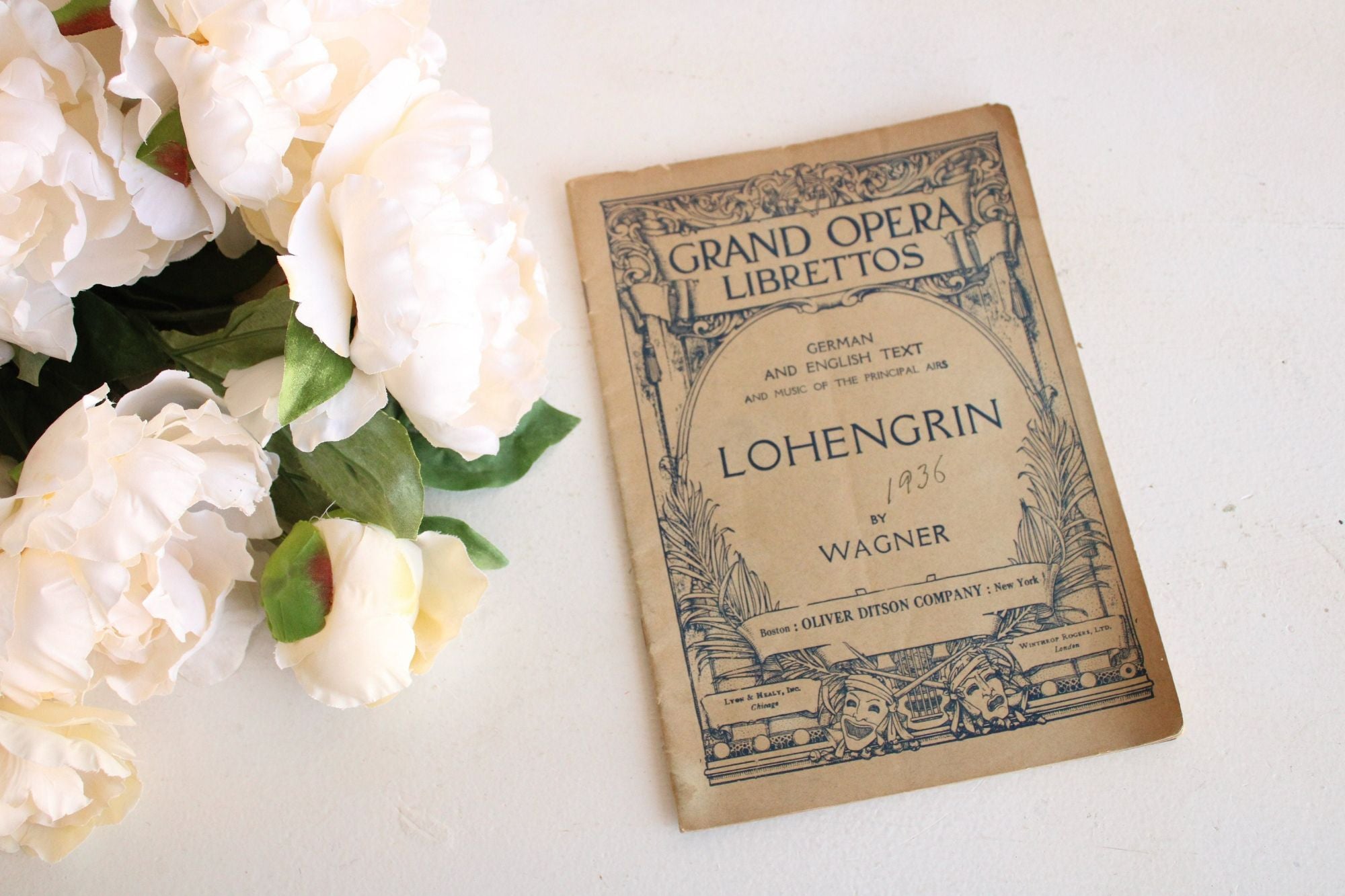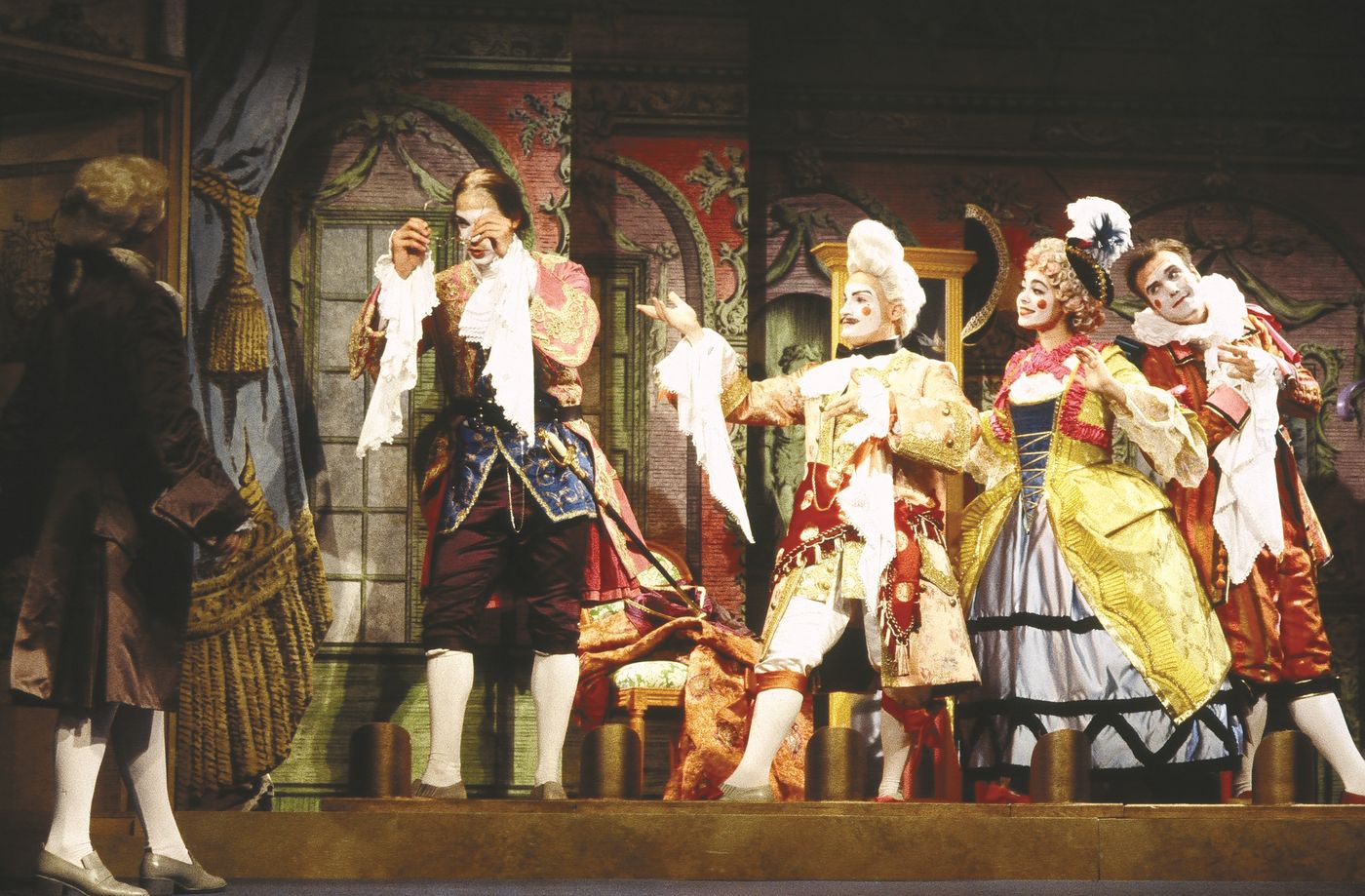Home>Events & Info>Opera>What Is The Opera Aida About


Opera
What Is The Opera Aida About
Modified: January 22, 2024
Discover the captivating opera Aida and immerse yourself in the dramatic tale of love, betrayal, and war. Experience the triumphs and tragedies of this timeless masterpiece.
(Many of the links in this article redirect to a specific reviewed product. Your purchase of these products through affiliate links helps to generate commission for AudioLover.com, at no extra cost. Learn more)
Table of Contents
Introduction
Opera is an art form that combines music, drama, and visual elements to create a mesmerizing performance. One of the most beloved and enduring works of the operatic repertoire is the opera “Aida.”
Set in ancient Egypt, “Aida” tells the tragic story of a love triangle between the captive Ethiopian princess, Aida, the Egyptian military commander Radamès, and the Egyptian princess Amneris. This epic tale of love, loyalty, and sacrifice has captivated audiences for over a century with its stunning music and powerful emotions.
Composed by the renowned Italian composer Giuseppe Verdi, “Aida” premiered on December 24, 1871, at the Khedivial Opera House in Cairo. The opera quickly gained international recognition for its exceptional score and the grandeur of its production.
In this article, we will delve into the historical background of “Aida,” explore the genius of Giuseppe Verdi as a composer, analyze the libretto’s storyline, and examine the themes and symbolism present in the opera. Additionally, we will highlight some of the most memorable musical moments and discuss the reception and enduring legacy of “Aida” in the world of opera.
Whether you are an opera enthusiast or just curious to learn more about this timeless masterpiece, join us on a journey through the mythical world of “Aida” and discover why it continues to be a beloved opera that resonates with audiences around the globe.
Historical Background
The historical background of “Aida” is closely tied to the rise of Egyptology and the fascination with ancient Egypt during the 19th century. During this period, European explorers and archaeologists were unearthing the mysteries of this ancient civilization, captivating the imaginations of artists and intellectuals.
Inspired by these discoveries, French Egyptomania was at its peak, and Italian Egyptologist Auguste Mariette proposed the idea of creating an opera set in ancient Egypt. In 1868, Mariette approached the renowned Italian composer Giuseppe Verdi with the concept, and Verdi was immediately intrigued by the idea.
Verdi’s creative process for “Aida” was not without its challenges. He initially struggled to find a suitable librettist to bring his vision to life. Eventually, Verdi enlisted the services of Antonio Ghislanzoni, an Italian poet and novelist, who would collaborate with Verdi on the creation of the libretto.
The premiere of “Aida” was highly anticipated, as it was to be performed in Cairo, under the patronage of the Khedive of Egypt. The venue, now known as the Cairo Opera House, was specially built for this grand occasion.
Unfortunately, due to forces beyond their control, the premiere of “Aida” faced numerous obstacles. The Franco-Prussian War and the subsequent bankruptcy of the Suez Canal Company disrupted the project, but Verdi and the creative team persevered.
Finally, on December 24, 1871, “Aida” made its debut in Cairo, conducted by the Italian maestro Giovanni Bottesini. The opera’s success was immediate, with the audience responding enthusiastically to Verdi’s stirring music and the grandeur of the production.
Following its premiere, “Aida” quickly made its way to other opera houses across Europe, solidifying its status as one of Verdi’s most enduring works. The popularity of “Aida” spread throughout the world, and it continues to be a staple of the operatic repertoire to this day.
The historical context of “Aida” adds an extra layer of fascination to the opera, as it reflects the cultural and artistic fascination with ancient Egypt during the 19th century. The grandeur and exoticism of the setting, combined with Verdi’s masterful composition, have ensured that “Aida” remains a beloved and iconic opera for generations to come.
Composer
Giuseppe Verdi, the masterful Italian composer, is the creative genius behind the opera “Aida.” Born on October 9, 1813, in the small town of Le Roncole, Verdi would go on to become one of the most celebrated composers of all time.
Verdi’s musical talent was evident from a young age, and he received a scholarship to study music in Milan. However, tragedy struck when his wife and two young children passed away within a span of two years. Despite these personal hardships, Verdi channelled his grief and emotions into his music, which resulted in some of his most profound and moving compositions.
Verdi’s career took off with the success of his opera “Nabucco” in 1842, which established him as a leading figure in Italian opera. Known for his melodic gift and dramatic storytelling, Verdi composed a series of masterpieces, including “Rigoletto,” “Il Trovatore,” and “La Traviata,” that captured the hearts of audiences worldwide.
When approached by Auguste Mariette with the concept for an opera set in ancient Egypt, Verdi was intrigued by the opportunity to delve into such a rich and exotic subject matter. His collaboration with librettist Antonio Ghislanzoni resulted in the creation of “Aida,” a work that showcased Verdi’s talent for creating music that perfectly captured the grandeur and emotional depths of the story.
Verdi’s music in “Aida” is characterized by its soaring melodies, powerful choruses, and intricate orchestration. The score seamlessly weaves together Egyptian-inspired motifs, lush romantic themes, and dramatic moments of intense emotion, reflecting the contrasting aspects of the storyline.
As a composer, Verdi had a profound understanding of the human condition, and his music has the ability to evoke a wide range of emotions in the listener. From the passionate and forbidden love between Aida and Radamès to the internal struggles of Amneris, Verdi’s music brings each character to life with depth and complexity.
Verdi’s impact on the world of opera cannot be overstated. His compositions revolutionized the art form and influenced countless composers who came after him. The timeless beauty and emotional power of Verdi’s music in “Aida” continue to captivate audiences and solidify his legacy as one of the greatest composers in history.
Libretto
The libretto of “Aida” plays a crucial role in bringing the story to life on the operatic stage. Written by Antonio Ghislanzoni, an Italian poet and novelist, the libretto beautifully captures the complex emotions and conflicts of the characters in the opera.
Ghislanzoni’s libretto is based on a scenario created by French Egyptologist Auguste Mariette, which was then adapted and developed by Ghislanzoni himself. The story revolves around a love triangle between the Ethiopian princess Aida, the Egyptian military commander Radamès, and the Egyptian princess Amneris.
Aida, a captured slave in the Egyptian court, secretly loves Radamès, the brave warrior who is in charge of Egypt’s army. However, Radamès is engaged to Amneris, who is also in love with him. This love triangle forms the basis of the opera, leading to conflicts, betrayals, and ultimately tragic consequences.
The libretto skillfully explores the themes of love, duty, jealousy, and loyalty. It delves into the struggles faced by each character as they navigate their own desires and the expectations placed upon them by their society and their own sense of honor. The emotional depth and complexity of the libretto add richness to the music and allow the performers to fully embody their respective roles.
Ghislanzoni’s libretto also highlights the juxtaposition of the Ethiopian and Egyptian cultures, drawing upon the historically accurate elements of ancient Egypt to create an atmosphere of grandeur and mystique. The libretto weaves together scenes of elaborate royal ceremonies, intimate personal interactions, and intense battles, creating a multi-dimensional narrative that keeps the audience engaged from beginning to end.
While the libretto of “Aida” may not adhere strictly to historical accuracy, it masterfully combines historical elements with fictional storytelling to create a captivating and emotionally resonant opera. The libretto brings to life the internal struggles of the characters and explores universal themes that are still relevant today.
Throughout “Aida,” the libretto seamlessly integrates with Giuseppe Verdi’s music, enhancing the dramatic impact of each scene. The powerful words and lyrics of the libretto set the stage for Verdi’s soaring melodies and emotionally charged orchestrations, resulting in a truly unforgettable operatic experience.
Plot Overview
Set in ancient Egypt, “Aida” tells the tragic tale of a love triangle between the Ethiopian princess Aida, the Egyptian military commander Radamès, and the Egyptian princess Amneris. The opera unfolds against the backdrop of war, political intrigue, and cultural clashes.
Act 1 introduces us to the love between Aida and Radamès, which is complicated by their different backgrounds and loyalties. Aida, a slave in the service of Amneris, conceals her true identity as the daughter of the Ethiopian king. Radamès, selected to lead the Egyptian army in its war against Ethiopia, hopes for victory and glory, but also battles with conflicting emotions as he finds himself drawn to Aida.
In Act 2, Radamès and Aida face a moral dilemma as they struggle to reconcile their love for each other with their loyalty to their respective homelands. Amneris, suspecting the affair, becomes consumed by jealousy and plots to unveil the truth.
In Act 3, tensions rise as the conflict between Egypt and Ethiopia reaches its peak. Radamès is accused of treason and is brought before the court, where Amneris, torn between her love for Radamès and her duty as an Egyptian princess, must decide his fate. Aida, torn between her love for Radamès and her loyalty to her people, is also faced with an impossible decision.
Act 4 becomes a culmination of love, sacrifice, and tragedy. As Radamès awaits his fate in a tomb, sealed alive as punishment for his alleged betrayal, Aida joins him, choosing to die with him rather than betray him or her people. In a deeply emotional farewell, they express their love for each other one last time before succumbing to their tragic fate.
The opera concludes with Amneris mourning the loss of Radamès and Aida, recognizing the depth of their love and the tragedy that has unfolded. As the final notes fade away, the audience is left with a profound sense of the power of love and the sacrifices it can entail.
The plot of “Aida” explores universal themes such as love, loyalty, duty, and sacrifice. It portrays the complexities of human emotions and the conflicts that arise when personal desires clash with societal expectations. Through its gripping storyline and emotional depth, “Aida” continues to captivate audiences and remind us of the enduring power of love and the tragic consequences that can result from it.
Act 1
The first act of “Aida” sets the stage for the intricate web of love, loyalty, and betrayal that unfolds throughout the opera.
The act opens in ancient Memphis, the capital of Egypt, where the Egyptian people eagerly await news of their military forces’ campaign against Ethiopia. The Egyptian military commander Radamès, admired for his bravery and leadership, dreams of victory and glory.
Meanwhile, Amneris, the Egyptian princess, harbors a secret love for Radamès and anxiously awaits his return from war. She is unaware of his growing affection for Aida, her Ethiopian slave, who shares the same deep love for Radamès.
Aida, torn between her love for Radamès and her loyalty to her Ethiopian heritage, finds solace in her close relationship with her father, Amonasro, who is the king of Ethiopia in disguise. They conceal their true identities from the Egyptians, and Amonasro urges Aida to obtain crucial military information from Radamès.
In a display of grandeur, the Egyptian king enters the scene and announces Radamès as the chosen leader to command the Egyptian army against Ethiopia. Radamès’ selection brings him one step closer to both the military success he desires and Amneris, who hopes to one day marry him.
The act reaches its emotional peak as Radamès, alone with his thoughts, muses on his conflicting desires for glory and his hidden love for Aida. In a powerful aria, he expresses his longing for a future that includes both military triumph and a life with Aida.
The act concludes with a stunning ensemble as the chorus fills the stage, celebrating the imminent departure of the Egyptian army. Amidst the excitement, Aida, Radamès, Amneris, and the other characters confront their complex emotions and inner struggles, setting the stage for the dramatic conflicts that will unfold in the subsequent acts.
Act 1 of “Aida” introduces the audience to the central characters and their conflicting desires. It establishes the foundations for the love triangles between Aida, Radamès, and Amneris, as well as the tension between duty and personal desires. With its soaring music and emotional depth, Act 1 sets the stage for the riveting drama that unfolds in the rest of the opera.
Act 2
In the second act of “Aida,” the emotional stakes are raised as the love triangle between Aida, Radamès, and Amneris intensifies, leading to jealousy, deceit, and personal turmoil.
The act opens in Amneris’ luxurious chambers, where she anxiously awaits Radamès’ return from battle. Consumed by her love for him, she longs for his affection and is oblivious to the fact that Radamès is deeply in love with Aida.
Amneris’s maids, sensing her inner turmoil, attempt to distract her with festivities and dances, but her thoughts remain fixated on Radamès. As tension builds, Amneris begins to suspect that there may be another woman involved in his life.
In a clever ploy to uncover the truth, Amneris feigns concern for Radamès’ safety and announces that he has perished in battle. This deception prompts Aida, who is secretly present, to reveal her true feelings of love and despair for Radamès.
Caught in her own ruse, Amneris confronts Aida about her love for Radamès. Aida, torn between her loyalty to her native Ethiopia and her love for Radamès, desperately tries to conceal the truth. However, Amneris’ suspicions are confirmed, and she seethes with jealousy and anger.
Meanwhile, news of Radamès’ triumphant return from battle spreads throughout the kingdom. He is hailed as a hero, and the Egyptian people celebrate his victory. Unaware of the tension brewing between the women he loves, Radamès basks in the glory of his conquest.
In a poignant duet, Aida and Radamès reunite in a secluded temple, expressing their forbidden love and the pain it causes them. They are interrupted by Ramfis, the high priest, and Amneris, who confronts Radamès about his treachery. Radamès, torn between his love for Aida and his loyalty to Egypt, denies the accusations.
The act reaches its climax as Radamès and Aida, now desperate to escape the mounting pressure and be together, hatch a plan to flee Egypt. However, their intentions are overheard by Amneris, who vows to seek revenge and punish them for their betrayal.
The second act of “Aida” illuminates the emotional complexities and conflicts faced by the characters. Jealousy, deceit, and the clash between personal desires and societal expectations drive the narrative forward, setting the stage for the dramatic and tragic events that await in the following acts.
Act 3
In the third act of “Aida,” the dramatic tension escalates as the relationships between Aida, Radamès, and Amneris unravel amidst the backdrop of war and betrayal.
The act opens with Radamès awaiting his fate as he is put on trial for treason. Accused of revealing military secrets to the enemy, his love for Aida and his conflicted loyalties are laid bare for all to see. Amneris, torn between her love for Radamès and her duty to Egypt, presides over the trial.
In a powerful scene, Radamès maintains his innocence despite the mounting evidence against him. Aida, torn between her love for Radamès and her loyalty to her homeland, pleads with him to deny his feelings for her in order to save his own life. Radamès, unwilling to renounce their love, maintains his defiance.
The tension reaches its peak as Amneris, desperate to save Radamès, offers him a chance at escape if he renounces Aida and chooses to marry her instead. Radamès, torn between his love for Aida and his loyalty to Egypt, refuses the offer, sealing his fate at the hands of the Egyptian court.
Amidst the turmoil, Amonasro, Aida’s father and the Ethiopian king, reveals himself, further complicating the situation. With his true identity exposed, Amonasro urges Aida to use her knowledge of the Egyptian plans to assist Ethiopia’s defense.
The act concludes with a powerful ensemble as the characters wrestle with their internal conflicts and the weight of their decisions. Amneris, struggling with her love for Radamès, grapples with the realization that her actions might lead to his condemnation.
In Act 3 of “Aida,” the audience is thrust into the midst of a passionate and fierce struggle between love, duty, and loyalty. The characters face impossible choices that will ultimately shape their fates and the trajectory of the opera’s narrative.
Act 4
The final act of “Aida” is a heart-wrenching culmination of love, sacrifice, and tragedy. As the opera draws to a close, the characters face the devastating consequences of their choices.
The act opens in the tomb where Radamès has been unjustly imprisoned for his alleged treason. As he waits for his execution, Radamès laments his fate and the loss of his beloved Aida. In a deeply emotional aria, he envisions a life full of love and happiness that he can never have.
Aida, consumed by her love for Radamès, secretly enters the tomb to be with him in his final moments. Disguised as a slave, she expresses her undying devotion and chooses to be entombed with him rather than live a life without him. Their final duet is a poignant expression of their love and the acceptance of their tragic destiny.
Amneris, now aware of the depth of love between Aida and Radamès, arrives at the tomb to plead for his life. Desperate to save him, she begs the gods to show mercy, but her efforts are in vain. Amneris is left to mourn the loss of her beloved Radamès and the painful realization that her jealousy and manipulation have had dire consequences.
The opera ends with a hauntingly beautiful ensemble as Aida and Radamès, together in death, find eternal peace beyond the confines of their mortal lives. The chorus joins in mourning the tragedy that has unfolded, reflecting on the power of love and the sacrifices made for it.
Act 4 of “Aida” is a deeply emotional and tragic finale to the opera, fulfilling the narrative’s themes of love, loyalty, and sacrifice. The fates of the characters are sealed, and the audience is left with a profound sense of the power and tragedy of forbidden love.
Themes and Symbolism
“Aida” explores several powerful themes that resonate with audiences and provide deeper layers of meaning to the opera. These themes are conveyed through both the storyline and the musical elements, enriching the overall experience for the audience.
One prominent theme in “Aida” is the conflict between love and duty. The characters, particularly Aida and Radamès, grapple with the intense emotions of forbidden love while being torn between their personal desires and the expectations placed upon them by their societies. This theme highlights the universal struggle between following one’s heart and fulfilling obligations to others.
The opera also delves into the themes of loyalty and betrayal. Each character, driven by their own motivations, must make choices that have far-reaching consequences. The complex web of loyalties is tested, leading to betrayals and tragic outcomes for many of the characters. Through these actions, “Aida” examines the fragility of trust and the devastating repercussions that can arise from personal ambitions.
Another theme prevalent in “Aida” is the clash of cultures. The opera depicts the tension between the Egyptian and Ethiopian civilizations, showcasing the cultural differences, traditions, and beliefs of each. This conflict adds depth to the storyline and serves as a backdrop for exploring themes of prejudice, xenophobia, and the human tendency to view those who are different as “other.”
Symbolism is also important in “Aida.” The opera employs various symbols to enhance the storytelling and convey deeper meanings. The pyramids and ancient Egyptian artifacts symbolize the grandeur and mysticism of Egypt. The flowing Nile River represents the passage of time and the cyclical nature of life. Additionally, the tomb symbolizes both death and eternal love, as Aida and Radamès choose to be together in death rather than be separated.
Furthermore, the music itself serves as a symbolic tool, enhancing the emotional impact of the story. From the triumphant fanfares during military victories to the tender, lyrical melodies of love and despair, the music paints a vivid picture of the characters’ inner turmoil and drives the overarching themes of the opera.
Overall, “Aida” explores themes of love, duty, loyalty, betrayal, and cultural clashes. Through its rich symbolism and poignant storytelling, the opera invites audiences to reflect on the complexities of human relationships and the tragic consequences that can arise from the choices we make.
Musical Highlights
The opera “Aida” is renowned for its stunning musical composition, featuring a plethora of memorable and captivating moments that have solidified its place among the operatic greats. From grand orchestral passages to intimate arias, the music of “Aida” showcases Giuseppe Verdi’s brilliance as a composer.
One of the most iconic musical highlights of “Aida” is the Triumphal March in Act 2. This majestic and triumphant procession captures the grandeur of ancient Egypt, with its exuberant brass fanfares, energetic rhythms, and lush orchestration. It is a spectacle that is both visually and audibly captivating, featuring a massive chorus, vibrant instrumentation, and a sense of grandiosity that has become synonymous with the opera.
The Nile Scene, also in Act 2, is another standout moment in “Aida.” This scene is marked by Verdi’s ability to evoke an atmosphere of mystery and longing. The flowing orchestration, ethereal vocal lines, and evocative melodies create a sense of tranquility as Aida reflects on her love for Radamès and her yearning for her homeland.
The heart-wrenching duet between Aida and Radamès in Act 3, “O terra, addio” (Farewell, oh earth), is a pinnacle of emotional intensity. As they face the prospect of death together, their voices intertwine in a bittersweet expression of their love, culminating in a breathtaking climax that elicits profound emotions from both performers and the audience.
The Act 3 aria “Celeste Aida” is another seminal moment in the opera. It showcases Radamès’ vocal prowess as he declares his love for Aida and his aspirations for a future filled with glory and happiness. With its soaring melodies and expansive range, this aria has become one of the most beloved tenor arias in the operatic repertoire.
Throughout “Aida,” Verdi masterfully weaves together powerful choruses, intricate ensembles, and deeply emotional arias to create a rich tapestry of musical moments. From the jarring intensity of the Judgment Scene in Act 4 to the tender and poignant melodies in Act 1, each musical highlight serves to enhance the storytelling and evoke a range of emotions within the listener.
The score of “Aida” is a testament to Verdi’s ability to create emotional depth and convey the complex emotions of the characters. It combines grand, sweeping orchestration with intimate, lyrical passages, showcasing Verdi’s mastery in crafting music that perfectly captures the essence of the opera’s storyline and themes.
Ultimately, the musical highlights of “Aida” contribute to its enduring popularity and solidify its place in the pantheon of operatic masterpieces. Each moment is a testament to Verdi’s genius and the captivating power of music in storytelling.
Reception and Legacy
Upon its premiere, “Aida” was met with enormous success and has since become one of the most beloved and frequently performed operas in the world. Its lush music, compelling storyline, and vivid staging have captivated audiences for over a century.
From the moment “Aida” debuted in Cairo in 1871, it was clear that Verdi had created something truly extraordinary. The opera’s grandeur and emotional depth resonated with audiences, and its popularity quickly spread across Europe and beyond. It became a staple of the operatic repertoire, establishing Verdi’s reputation as one of the greatest composers of his time.
Over the years, “Aida” has been continuously staged in prestigious opera houses around the world, including the Metropolitan Opera in New York, La Scala in Milan, and the Royal Opera House in London. Its timeless themes of love, loyalty, and sacrifice, portrayed through Verdi’s exquisite music, have ensured that “Aida” remains a favorite among opera enthusiasts and newcomers alike.
The legacy of “Aida” extends beyond its theatrical performances. The opera has also inspired numerous adaptations and interpretations in various forms of media, including film, ballet, and even rock opera. Its influence on popular culture is a testament to the enduring power of its music and storytelling.
Furthermore, “Aida” holds a special place in the hearts of artists and performers. Countless renowned singers, conductors, and directors have left their mark on the opera, leaving behind memorable interpretations and recordings. It continues to provide a platform for opera stars to showcase their vocal prowess and acting skills, attracting top talents from around the world.
One of the enduring legacies of “Aida” is its ability to transcend cultural boundaries and bridge cultures. It has been performed in various languages and adapted to different settings, demonstrating its universal appeal and ability to resonate with audiences across time and place.
From its premiere to the present day, “Aida” remains a cornerstone of the operatic repertoire, admired for its stunning music, compelling story, and powerful emotions. It serves as a testament to Giuseppe Verdi’s enduring genius and the timeless nature of the human experiences depicted in the opera. Whether experienced on stage, through recordings, or in adaptations, “Aida” continues to captivate and move audiences, ensuring its lasting place in the annals of opera history.
Conclusion
“Aida” stands as a testament to the power of opera to transport and enrapture audiences. Giuseppe Verdi’s masterful composition, paired with the captivating libretto by Antonio Ghislanzoni, creates a world of love, loyalty, and tragedy set against the backdrop of ancient Egypt.
Throughout the opera, the audience is drawn into a gripping storyline that explores universal themes of love versus duty, loyalty, betrayal, and the clash of cultures. The music of “Aida” evokes a myriad of emotions, from the triumphant fanfares of the grand processions to the tender melodies that convey the depths of human longing and despair.
“Aida” has enraptured audiences since its premiere in 1871 and continues to captivate new generations of opera lovers. Its grandeur, emotional depth, and timeless themes have made it one of the most frequently performed operas around the world. From prestigious opera houses to community theaters, the enduring legacy of “Aida” is a testament to its lasting impact on the world of music and theater.
Verdi’s genius as a composer shines through the memorable musical highlights of “Aida,” from the stunning Triumphal March to the heart-wrenching duets and arias. The opera’s themes and symbolism resonate deeply, providing opportunities for reflection on the complexities of human relationships and the sacrifices made in the name of love.
As we journey through the mythical world of “Aida,” we encounter a range of emotions, from the heights of passion and triumph to the depths of sorrow and sacrifice. The opera’s timeless appeal lies in its ability to touch the hearts and minds of audiences, reminding us of the shared experiences and profound emotions that unite humanity.
Whether experienced on stage or through recordings, “Aida” transports us to a world of ancient Egypt and invites us to contemplate the depths of human devotion, the consequences of our choices, and the indomitable power of love. It continues to captivate and inspire, solidifying its place as one of the greatest operas ever composed.











